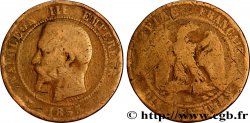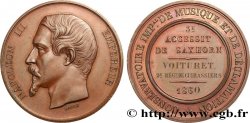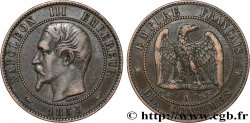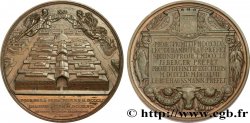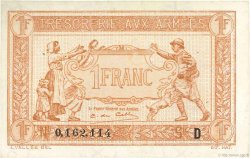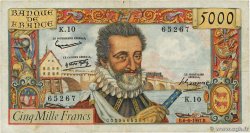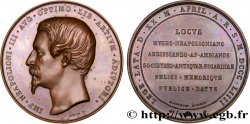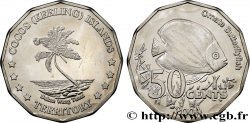E-auction 411-323534 - fme_371446 - SECOND EMPIRE Médaille, Musée national de Picardie
Чтобы принять участие в торгах, вы должны войти в систему и стать подтвержденным участником аукциона. Войдите, чтобы сделать ставку. Ваш аккаунт будет подтвержден в течение 48 часов. Не ждите до закрытия торгов, чтобы зарегистрироваться.Сделав ставку на данный товар, вы вступаете в юридическое соглашение на покупку выбранного товара и нажатием кнопки «Сделать ставку» подтверждаете принятие вами условий интернет-аукционов cgb.fr.
Ставка может бить сделана только в полном эквиваленте евро. Торги закроются согласно времени, указанному в описании товара, все ставки, сделанные после закрытия торгов, учитываться не будут. Не следует откладывать предложение вашей ставки до последнего момента, так как система может не успеть обработать вашу заявку, и ваша ставка не будет принята. Более детальную информацию вы найдёте здесь: FAQ по интернет-аукционам.
БЕСПЛАТНО.
БЕСПЛАТНО.
| Оценить : | 160 € |
| Цена : | 72 € |
| Максимальная предлагаемая цена : | 138 € |
| Конец торгов : | 01 March 2021 18:35:30 |
| Участников : | 9 Участников |
Тип Médaille, Musée national de Picardie
Дата: 1870
Монетный двор / Город: 80 - Amiens
Металл: copper
Диаметр: 52 mm
Ориентация осей монеты: 12 h.
Гравер CAQUÉ Armand Auguste (1795-1881)
Вес: 70 g.
Век: lisse + main CUIVRE
Пуансон: main indicatrice (1845-1860) et CUIVRE
Комментарии о состоянии
Superbe médaille avec un très beau portrait au droit. Fine patine brune, bien homogène. Traces de manipulation
Лицевая сторона
Аверс: легенда: IMP. NAPOLIONI. III. AVG. OPTIMO. LIB. ARTIBVM. ADIVTORI..
Аверс: описание: Tête nue à gauche ; signé au-dessous CAQUE F..
Обратная сторона
Реверс: легенда: LEGE. LATA D. XX. M. APRIL. A. R. S. M. DCCC. LIIII // LOCVS / MVSEO. NEAPOLIONIANO / AEDIFICANDO. AP. AMBIANOS / SOCIETATI. ANTIQVAR. PICARDIAE / FELICI. MEMOIQVE / PVBLICE. DATVS.
Реверс: Описание: Légende en six lignes, signé : MASSONET EDITEUR.
Комментарий
Le musée de Picardie est un musée d'art et d'archéologie situé à Amiens, en France. Il regroupe de riches collections qui vont de la Préhistoire au XXe siècle, notamment en archéologie et en peinture. Il a reçu le label « musée de France ».
Le musée fut créé en 1802 sous le nom « musée Napoléon », en référence à l'empereur Napoléon Ier, considéré comme le « fondateur » du musée, après qu'il eut envoyé une série de tableaux à l'occasion de la signature de la paix d'Amiens.
Le bâtiment actuel du musée fut construit entre 1855 et 1867 sur les plans des architectes Henri Parent et Arthur Diet qui prirent modèle sur l'agrandissement du Palais du Louvre de Napoléon III. Véritable palais, le bâtiment a été spécifiquement conçu - ce qui, à l'époque, était une véritable innovation - pour être un musée accueillant les collections régionales d'antiquités et des œuvres d'art. C'est aussi un bâtiment à la gloire de la Picardie et à ses hommes illustres. Sur les médaillons de la façade sont sculptés les portraits d'Antoine Parmentier, Jean de La Fontaine, Robert de Luzarches… Sur le plafond peint du grand salon on peut voir Jeanne Hachette, Pierre l'Ermite, Jean Racine…
Il est l'un des premiers établissements modernes de ce type bâti en France et servit de modèle pour d'autres villes. L'édifice a été créé grâce à l'action militante de la Société des antiquaires de Picardie, soucieuse de doter la cité d'un équipement propre à accueillir les objets récoltés depuis des décennies..
Le musée fut créé en 1802 sous le nom « musée Napoléon », en référence à l'empereur Napoléon Ier, considéré comme le « fondateur » du musée, après qu'il eut envoyé une série de tableaux à l'occasion de la signature de la paix d'Amiens.
Le bâtiment actuel du musée fut construit entre 1855 et 1867 sur les plans des architectes Henri Parent et Arthur Diet qui prirent modèle sur l'agrandissement du Palais du Louvre de Napoléon III. Véritable palais, le bâtiment a été spécifiquement conçu - ce qui, à l'époque, était une véritable innovation - pour être un musée accueillant les collections régionales d'antiquités et des œuvres d'art. C'est aussi un bâtiment à la gloire de la Picardie et à ses hommes illustres. Sur les médaillons de la façade sont sculptés les portraits d'Antoine Parmentier, Jean de La Fontaine, Robert de Luzarches… Sur le plafond peint du grand salon on peut voir Jeanne Hachette, Pierre l'Ermite, Jean Racine…
Il est l'un des premiers établissements modernes de ce type bâti en France et servit de modèle pour d'autres villes. L'édifice a été créé grâce à l'action militante de la Société des antiquaires de Picardie, soucieuse de doter la cité d'un équipement propre à accueillir les objets récoltés depuis des décennies..








 Cообщить об ошибке
Cообщить об ошибке Распечатать страницу
Распечатать страницу Отправить мой выбор
Отправить мой выбор Задать вопрос
Задать вопрос Consign / sell
Consign / sell
 Информация
Информация